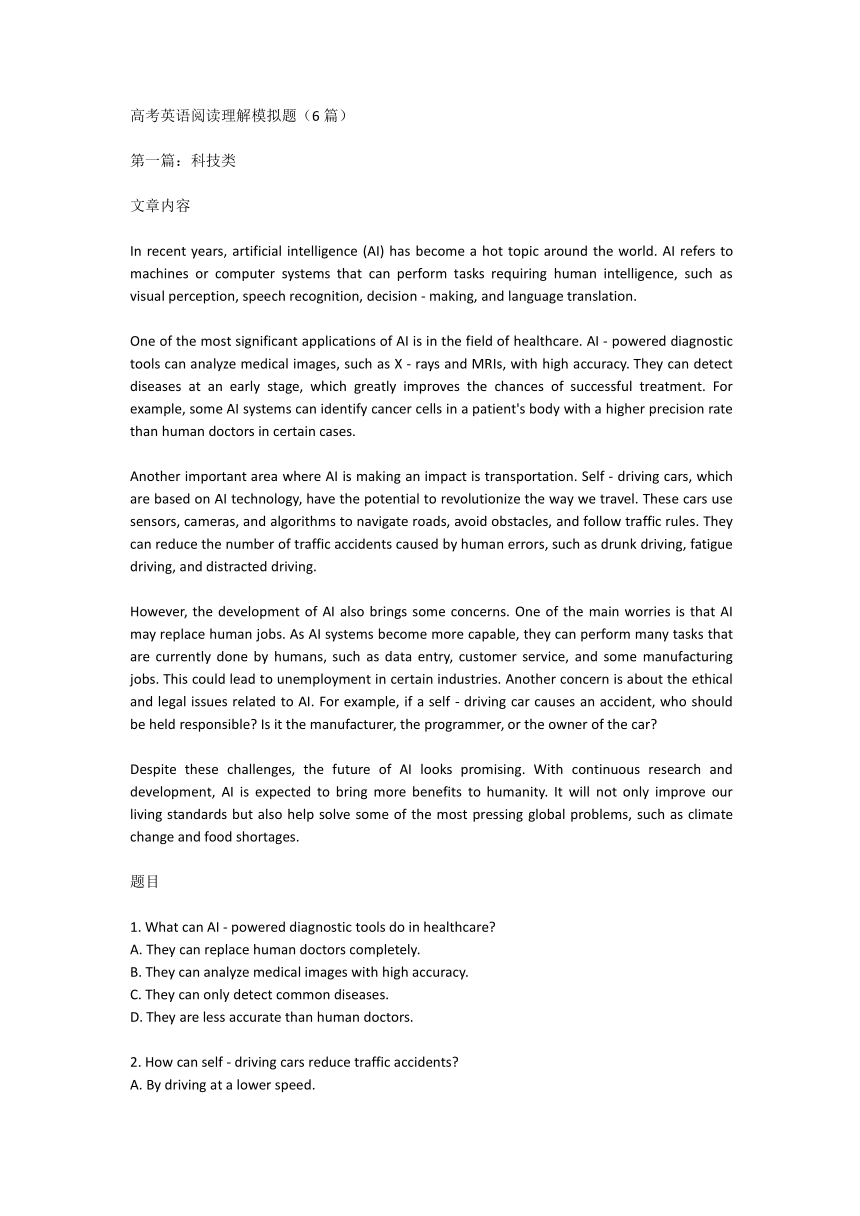
高考英语阅读理解模拟题(6篇) 第一篇:科技类 文章内容 In recent years, artificial intelligence (AI) has become a hot topic around the world. AI refers to machines or computer systems that can perform tasks requiring human intelligence, such as visual perception, speech recognition, decision - making, and language translation. One of the most significant applications of AI is in the field of healthcare. AI - powered diagnostic tools can analyze medical images, such as X - rays and MRIs, with high accuracy. They can detect diseases at an early stage, which greatly improves the chances of successful treatment. For example, some AI systems can identify cancer cells in a patient's body with a higher precision rate than human doctors in certain cases. Another important area where AI is making an impact is transportation. Self - driving cars, which are based on AI technology, have the potential to revolutionize the way we travel. These cars use sensors, cameras, and algorithms to navigate roads, avoid obstacles, and follow traffic rules. They can reduce the number of traffic accidents caused by human errors, such as drunk driving, fatigue driving, and distracted driving. However, the development of AI also brings some concerns. One of the main worries is that AI may replace human jobs. As AI systems become more capable, they can perform many tasks that are currently done by humans, such as data entry, customer service, and some manufacturing jobs. This could lead to unemployment in certain industries. Another concern is about the ethical and legal issues related to AI. For example, if a self - driving car causes an accident, who should be held responsible Is it the manufacturer, the programmer, or the owner of the car Despite these challenges, the future of AI looks promising. With continuous research and development, AI is expected to bring more benefits to humanity. It will not only improve our living standards but also help solve some of the most pressing global problems, such as climate change and food shortages. 题目 1. What can AI - powered diagnostic tools do in healthcare A. They can replace human doctors completely. B. They can analyze medical images with high accuracy. C. They can only detect common diseases. D. They are less accurate than human doctors. 2. How can self - driving cars reduce traffic accidents A. By driving at a lower speed. B. By following traffic rules more strictly. C. By avoiding human - caused errors. D. By using more advanced sensors. 3. What are the concerns about the development of AI A. It may cause environmental pollution. B. It may lead to unemployment and raise ethical and legal issues. C. It may slow down the progress of other technologies. D. It may increase the cost of living. 4. What is the author's attitude towards the future of AI A. Pessimistic. B. Doubtful. C. Neutral. D. Optimistic. 答案与解析 1. 答案:B 解析:根据文章第二段“AI - powered diagnostic tools can analyze medical images, such as X - rays and MRI ... ...
~~ 您好,已阅读到文档的结尾了 ~~

